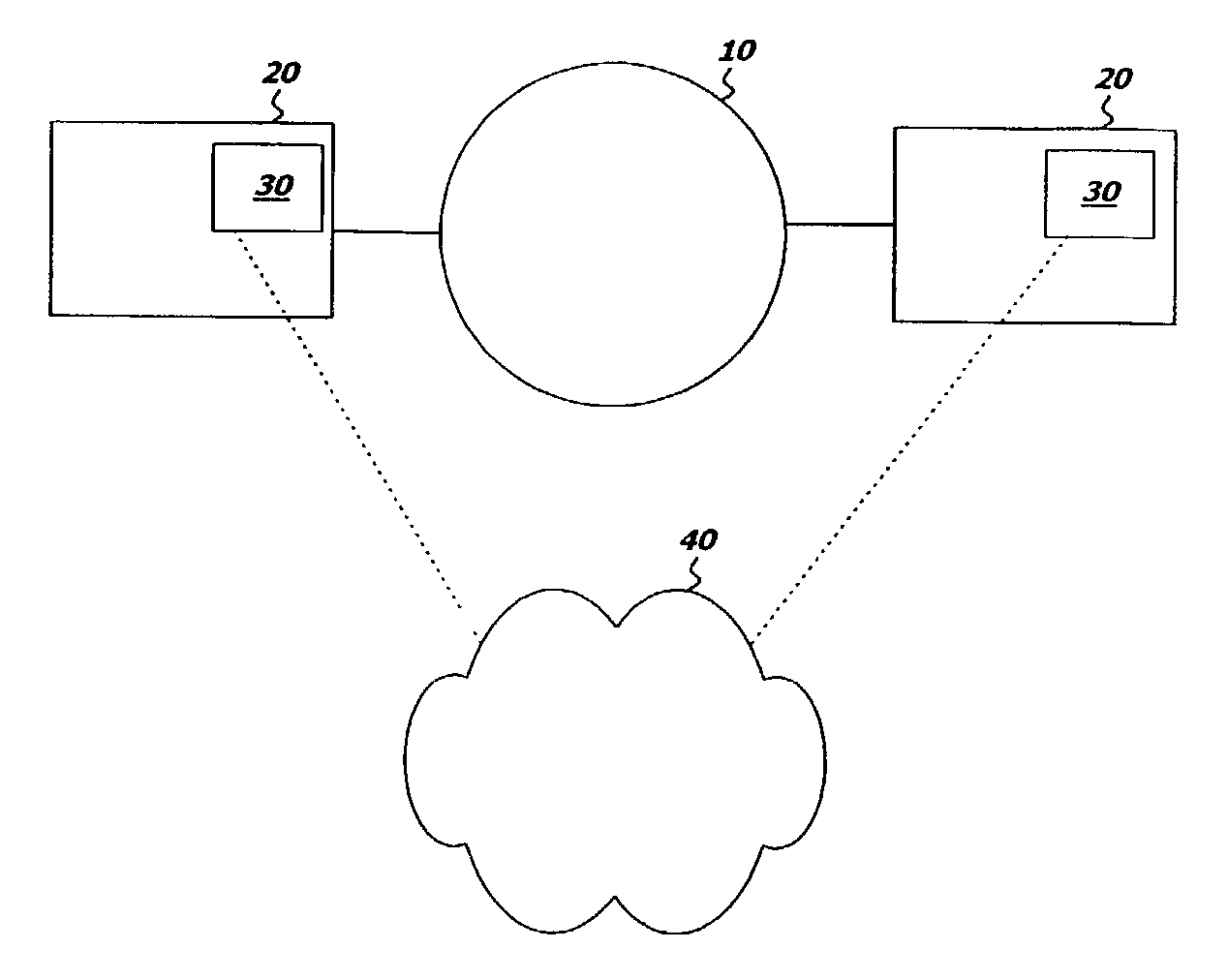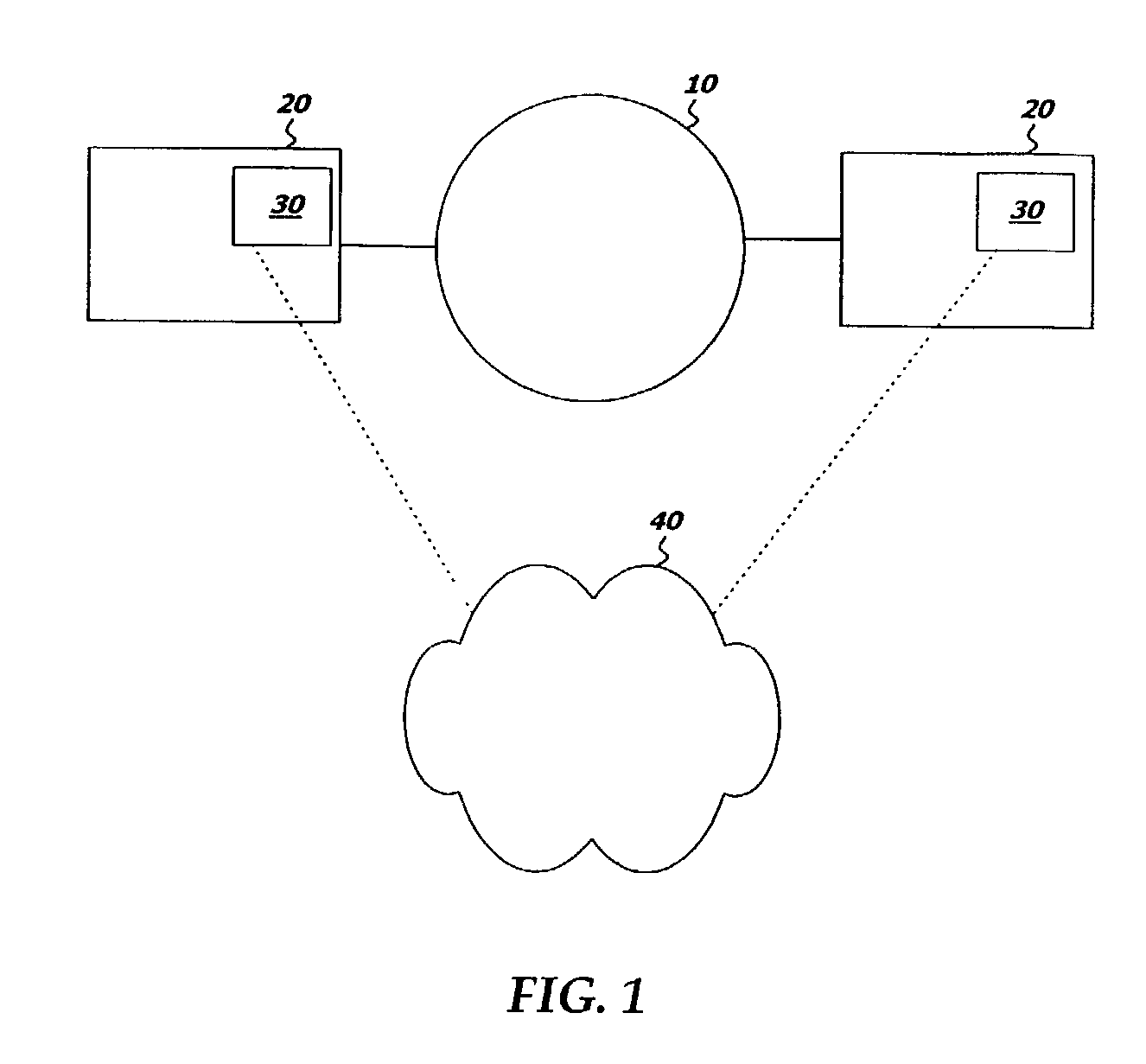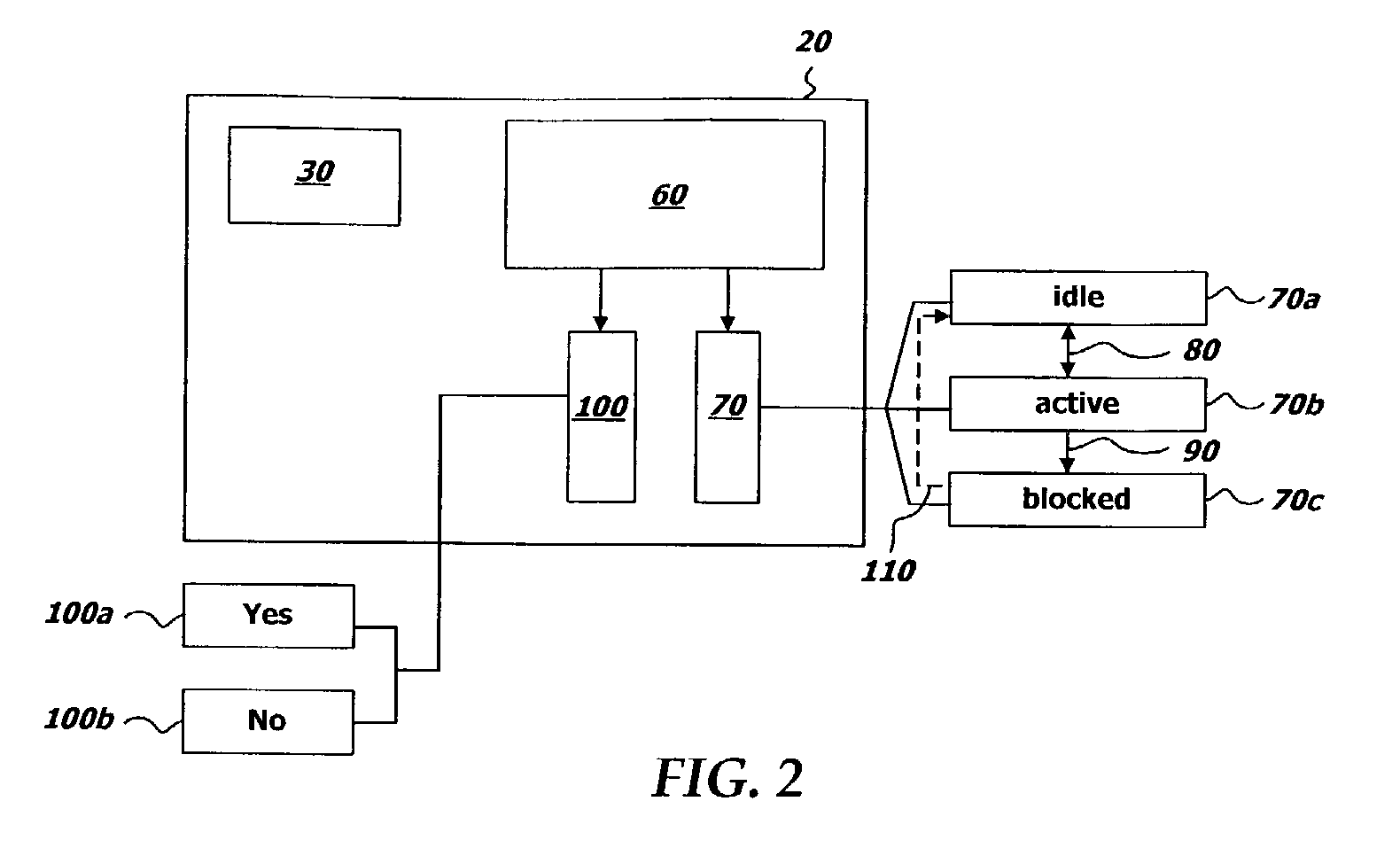System and method for the allocation of grid computing to network workstations
a network workstation and workstation technology, applied in data switching networks, multi-programming arrangements, instruments, etc., can solve problems such as the degradation of the performance of the workstation with respect to its interactive workload, the under utilization of workstation resources, and the increase of the opportunity represented by excess capacity, so as to achieve the effect of effective use and maintain the expected level of interactive performance and integrity
- Summary
- Abstract
- Description
- Claims
- Application Information
AI Technical Summary
Benefits of technology
Problems solved by technology
Method used
Image
Examples
Embodiment Construction
[0012]While the present invention will be described more fully hereinafter with reference to the accompanying drawings, in which a preferred embodiment(s) of the present invention is shown, it is to be understood at the outset of the description which follows that persons of skill in the appropriate arts may modify the invention here described while still achieving the favorable results of the invention. Accordingly, the description which follows is to be understood as being a broad, teaching disclosure directed to persons of skill in the appropriate arts, and not as limiting upon the present invention.
[0013]Devices and systems and the relevant standards regarding grid computing environments, and other systems or standards which provide for the sharing of workstation resources on a network, whether now known or developed in the future, are assumed to be well known to persons skilled in the relevant arts. Such devices and systems may be implemented in any of the many alternate embodi...
PUM
 Login to View More
Login to View More Abstract
Description
Claims
Application Information
 Login to View More
Login to View More - R&D
- Intellectual Property
- Life Sciences
- Materials
- Tech Scout
- Unparalleled Data Quality
- Higher Quality Content
- 60% Fewer Hallucinations
Browse by: Latest US Patents, China's latest patents, Technical Efficacy Thesaurus, Application Domain, Technology Topic, Popular Technical Reports.
© 2025 PatSnap. All rights reserved.Legal|Privacy policy|Modern Slavery Act Transparency Statement|Sitemap|About US| Contact US: help@patsnap.com



